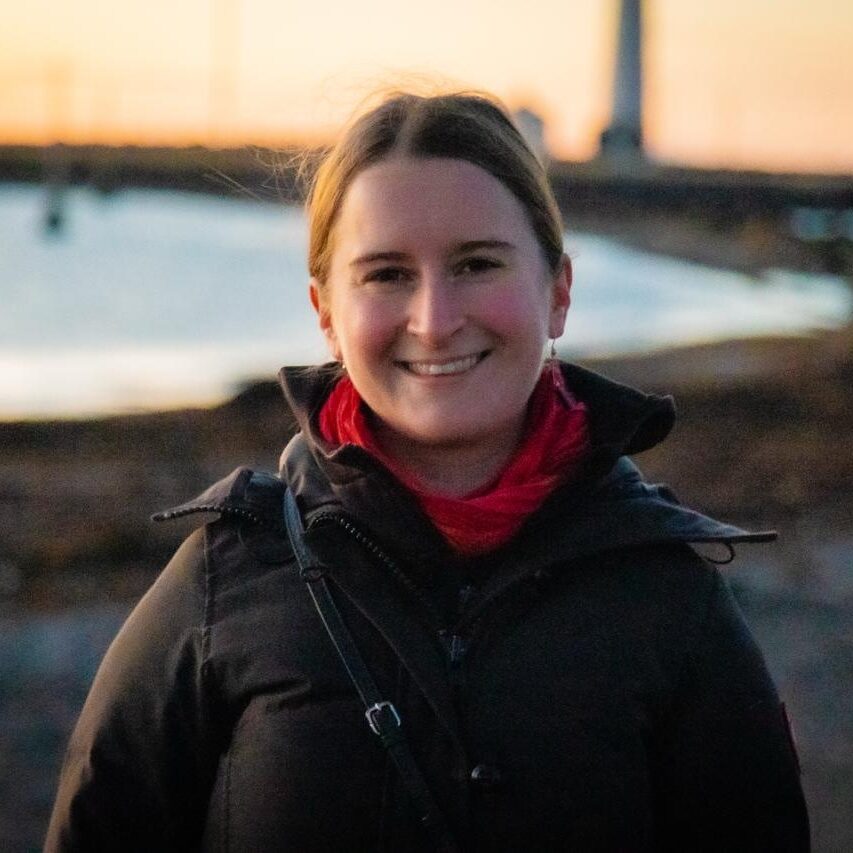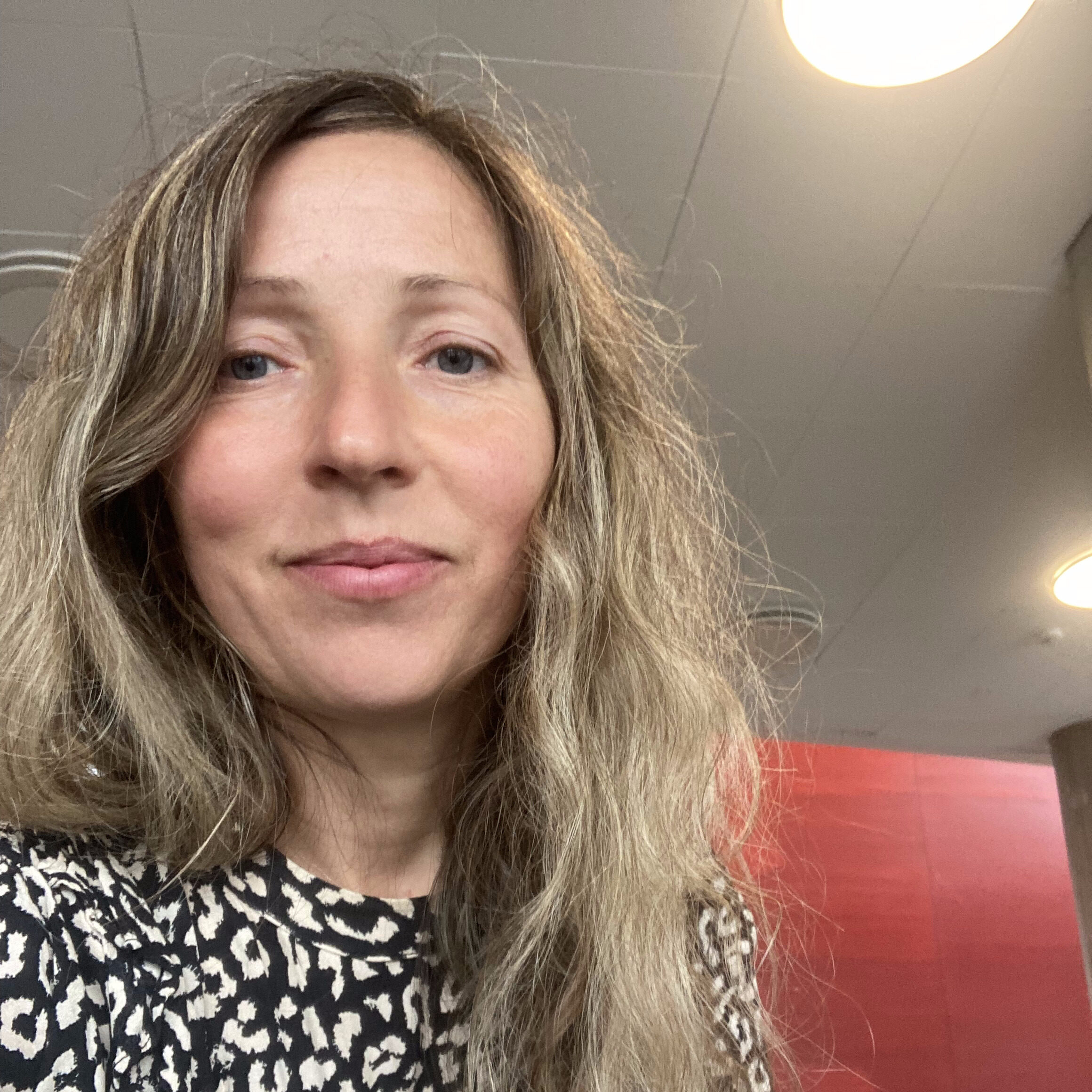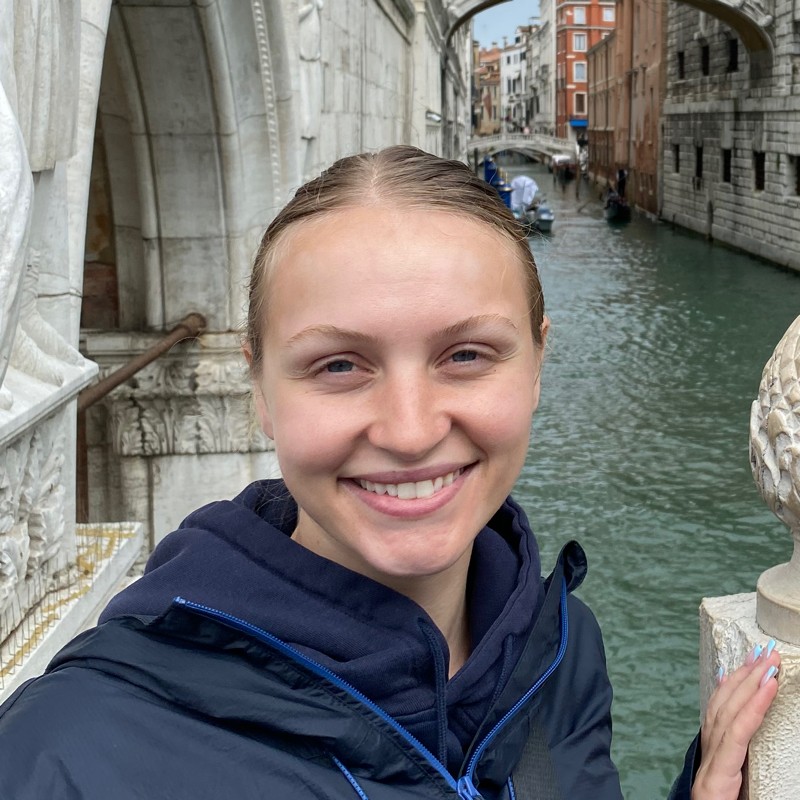
Edited Peri Dworatzek
IEFLL Partnership Coordinator
PhD Student at York University
November 2025
In June 2025, researchers, students, and faculty from York University (YU), in Toronto, Canada, travelled to the University of Iceland (HI), in Reykjavik, Iceland, to meet with their counterparts’, in which they are all part of the International Ecological footprint Learning Lab (IEFLL). This week-long visit was the first time IEFLL members from YU and HI were meeting in-person, after having collaboratively conducted research virtually for two years.
The IEFLL partnership is an international, multistakeholder partnership bringing together academics and practitioners to quantify and track global and regional sustainability through the use of ecological footprint and biocapacity metrics. Graduate students at York University and the University of Iceland are trained in sustainability informatics to access and clean large datasets and analyze and visualize important data. Through IEFLL, students and researchers produce the National Ecological Footprint and Biocapacity Accounts (NEFBA) – a large dataset containing Ecological footprint and Biocapacity data for every country in the world on a timeline from 1961 to 2024.
One aim of meeting in-person was to share ongoing and future research on ecological footprint and biocapacity. This was achieved by fostering spaces of insightful and deep conversations. The IEFLL Research Symposium was a half-day long event for graduate students and postdoctoral researchers to present their future and ongoing work to collect feedback and discuss potential collaborations. The abstracts for each presentation and presenters is organized below to share the current research that is being done in the IEFLL partnership.
Comparative Footprint Analysis of Waste End-of-Life Strategies

Bumika Srikanthalingam, Masters student at York University. Bumika is currently conducting this research.
Ontario, a province in Canada, faces a looming waste disposal crisis, with landfill capacity projected to be exhausted within the next decade. Rising waste generation, stagnant diversion rates, unstable recycling markets, and high processing costs continue to drive the province’s heavy reliance on landfilling, which carries significant ecological and policy risks. To address this challenge, my proposed research investigates how alternative end-of-life (EoL) pathways for municipal solid waste compare in terms of ecological footprint (EF) per tonne of waste processed, focusing on carbon uptake and built-up land components. The study will examine five primary EoL strategies (engineered landfills, material recovery facilities, composting, anaerobic digestion, and waste-to-energy) and apply scenario modeling to identify infrastructure combinations that minimize ecological impact while meeting long-term disposal needs. By linking waste management policy to EF metrics, this project aims to inform sustainable infrastructure planning and provide evidence-based pathways for reducing Ontario’s dependence on landfilling while advancing circular economy goals.
Creating an Ecological footprint Dashboard

Beatrice Foley, Masters / Juris Doctor student at York University. Beatrice currently conducting this research.
My research will look to create an ecological footprint dashboard that converts the National Ecological Footprint and Biocapacity Accounts (NEFBA) created by the Ecological Footprint Initiative into a visually appealing and interactive product. It will integrate the core metrics of the ecological footprint data with a macroeconomic context and population/land data to show total trends and important effects that humans have on their ecosystem, and how to improve our global demand of resources. While the methodology used to generate the NEFBA by the Ecological Footprint Initiative has been constantly updated and improved, developing this dashboard will be a new frontier for expanding ecological footprint data and its use in policy and commercial spheres. This dashboard will hopefully equip IEFLL to communicate insights quickly and support evidence-based policy and education.
Accounting for Wetlands in the Ecological footprint and Biocapacity Framework

Petra Dimitrova Toneva, Masters student at the University of Iceland. Petra is currently conducting this research.
My area of research is the integration of wetlands as a land component in the ecological footprint. Wetlands play an important role in global carbon fluxes and need to be considered alongside other major carbon sinks such as global oceans and forests to better understand the biosphere’s regenerative capacity. A previous report done for the province of Ontario, Canada was the first to integrate wetlands as a biocapacity component and is an important stepping stone for my research. My goal is to investigate and select data sources, to reflect on the limitations of the data and to generate ecological footprint and biocapacity accounts for spotlight countries. Narrowing the scope down to 3-5 countries will allow me to create the process for integrating wetlands on a national level, which can then be replicated across the globe. The most important characteristics of wetlands to consider in relation to ecological footprint and biocapacity accounts are area spatial coverage and carbon accumulation rates.
Exploring Indicators of Human Wellbeing and Ecological Sustainability in the Nordic Countries

Marina Ermina, Masters student at the University of Iceland. Marina has completed this research.
Balancing human wellbeing with ecological sustainability is a central challenge of sustainable development. This study examines how these dimensions are measured interconnected, and applied in the Nordic countries (Denmark, Finland, Iceland, Norway, and Sweden), where high levels of wellbeing coexist with considerable ecological overshoot. Using a mixed-methods design, the research combines (i) quantitative analysis of composite indicators – the Human Development Index, Social Progress Index, Sustainable Development Goals Index, and ecological footprint (EF); and (ii) qualitative analysis of national wellbeing economy frameworks. The findings show that Nordic countries consistently perform well on overall human wellbeing indicators; however, this progress has not been matched by genuine ecological efficiency improvements. Declines in per capita EF are largely explained by population growth, while absolute EFs remain high. Persistent gaps remain in core wellbeing dimensions such as health, diet, and housing affordability. Correlation analysis nevertheless suggests signs of decoupling with wellbeing indicators negatively associated with EF, challenging the dominant perspective in existing research. National wellbeing economy frameworks vary in scope, measurement tools and integration strategies with no unified approach to harmonizing ecological sustainability and human wellbeing metrics. Indicator coverage is uneven with key ecological and human wellbeing areas underrepresented. Most frameworks remain in their early stages with effectiveness depending on moving beyond monitoring toward concrete policy actions. Overall, this study highlights the need for stronger political commitment, cross-sectoral coordination and harmonized metrics that reflect both national and global ecological limits ensuring wellbeing is achieved within the regenerative capacity of natural resources.
Developing a Satellite-Based Methodology to Estimate Built-up Biocapacity for use in the National Ecological footprint and Biocapacity Accounts: A Comparative Study of Pléiades Neo and Sentinel-2 Imagery, Classification Algorithms, and Segmentation Approaches

Anne Louise Van Berkum, Masters student at the University of Iceland. Anne has completed this research.
Built-up land is an important component of the ecological footprint accounting framework, yet the National Ecological Footprint and Biocapacity Accounts (NEFBA) assume built-up land has the biocapacity of cropland. The NEFBA uses equivalence factors and yield factors to transform raw area data into global hectares (gha), hectares of globally average productivity. This research aims to develop a satellite-based methodology for estimating built-up biocapacity. A 2,800-ha study area in the Hague, the Netherlands, was used to compare the effect of spatial resolution, classification algorithm, and segmentation technique on the results. Multispectral imagery from Pléiades Neo (1.2-meter resolution) and Sentinel-2 (10-meter resolution) provided the basis for classification into land cover categories. Identified land cover categories within the built-up fabric were transformed to biocapacity in gha by linking them to the NEFBA land types and adapting the yield and equivalence factors from the NEFBA to reflect reduced productivity in built-up conditions.
Built-up biocapacity for the study area was between 1700 and 3200 gha, far below the 10325 gha using the current NEFBA method. Among methodological factors, spatial resolution had the strongest influence, with Pléiades Neo capturing more trees which count strongly towards the biocapacity. Segmentation had little influence on results using Pléiades Neo, but was significant for Sentinel-2, where object-based methods often merged features. Pixel-based classifications tended to capture more small, vegetated features, but were more prone to misclassification of shaded infrastructure as dune sands or water. The impact of classification algorithms produced smaller shifts but still introduced measurable variation in final results.
Ecological footprint of the city of Reykjavík

Rakel Bærings Halldórsdóttir, Masters student at the University of Iceland. Rakel is currently conducting this research.
This master’s thesis calculates the ecological footprint of Reykjavík, the capital city of Iceland. The research applies a top-down approach, following the methodology used to derive the ecological footprint and biocapacity for Ontario communities. By adapting this framework to the Icelandic context, the study contributes to the growing body of municipal-level Ecological footprint assessments. Multiple datasets gathered from Statistics Iceland, Housing and Construction Authority, City of Reykjavík, and Environment Agency of Iceland are applied to develop ratios and scaling factors to downscale Iceland’s national ecological footprint to the city level. Key data collected cover population, consumption, transportation, housing, and energy use.
System Transition to Renewable Marine Fuels in the Nordics (STORM): A case study of domestic biofuel development and deployment in Iceland’s fishing fleet

Matthew Don Reimer Dyck, PhD student at the University of Iceland. Matthew is currently conducting this research.
Iceland’s fishing sector is one of the last vestiges of domestic fossil fuel consumption, accounting for approximately 26% of national energy-sector GHG emissions. Against this background, Iceland has set several ambitious targets aimed at reducing this total, including minimum renewable fuel share targets. This project aims to identify and quantitatively assess the feasibility of different biofuel pathways to contribute towards these goals, especially in the short-term as other alternative fuel options mature. In addition to a comparative analysis of the technical, economic, environmental, and social considerations of each fuel, this work draws on several complementary environmental accounting methodologies. Namely, this includes using a life cycle assessment approach to model the fleet-specific GHG emissions of deploying the different biofuel options, as well as applying an ecological footprint lens to quantify wider land-use considerations within the context of available biocapacity, helping to place potential impacts within a broader sustainability framework.
One Goes Up and the Other Goes Down: can Ecological footprint be used to Measure Human Impacts on Biodiversity?

Peri Dworatzek, PhD student at York University. Peri is currently conducting this research.
One impact of climate change is loss of biodiversity around the world, including a catastrophic loss of wildlife. For decades there have been debates about how to measure biodiversity and human impacts on biodiversity. One metric that has been identified as measuring human impacts on the environment and biodiversity is ecological footprint and biocapacity. Ecological footprint measures human production and consumption of the Earth’s renewable resources, while biocapacity measures the regenerative capacity of lands and waters and their capacity to absorb waste generated by humans. This accounting system measures flows of biomass from ecosystem services, which provides the ability to monitor pressures on the environment caused by humans. Ecological footprint and biocapacity data is produced on an annual basis for all countries around the world from 1961 to the last present year – thereby an extensive, reliable, and updated source for assessing impact. In this paper the ecological footprint metric was found to be a suitable and valuable measurement of human pressures on biodiversity, however, it should not be used alone. Additionally, through statistical analysis a significant negative correlation was found between ecological footprint and vertebrate species loss on a global scale. Arguments were made for how biocapacity can be used to represent ecological significance, although it does not correlate with biodiversity.
Modeling the ecological footprint and thoughts on data analysis

Andrew Reeves, Postdoctoral researcher at York University. Andrew is currently conducting this research.
My presentation in Iceland highlighted my work with IEFLL over the past year as part of my post-doctoral research. First, I discussed my work producing ecological footprint-extended input-output tables for Ontario, which can be used to calculate ecological footprint demand based on different types of consumption or investment in Ontario. These tables are used in the newest “Ontario’s Ecological footprint and Biocapacity” report for the Ontario Ministry of Natural Resources and Environment. I then discussed my work exploring modeling improvements for projecting ecological footprint use into the future using the LowGrow SFC system dynamics model of the Canadian economy. Finally, I left the group with some thoughts about time series analysis and using creative plots for analyzing and displaying data. I encouraged colleagues to reach out to discuss, since I spent much of my PhD analyzing and visualizing many types of data.
Leave a Reply
You must be logged in to post a comment.